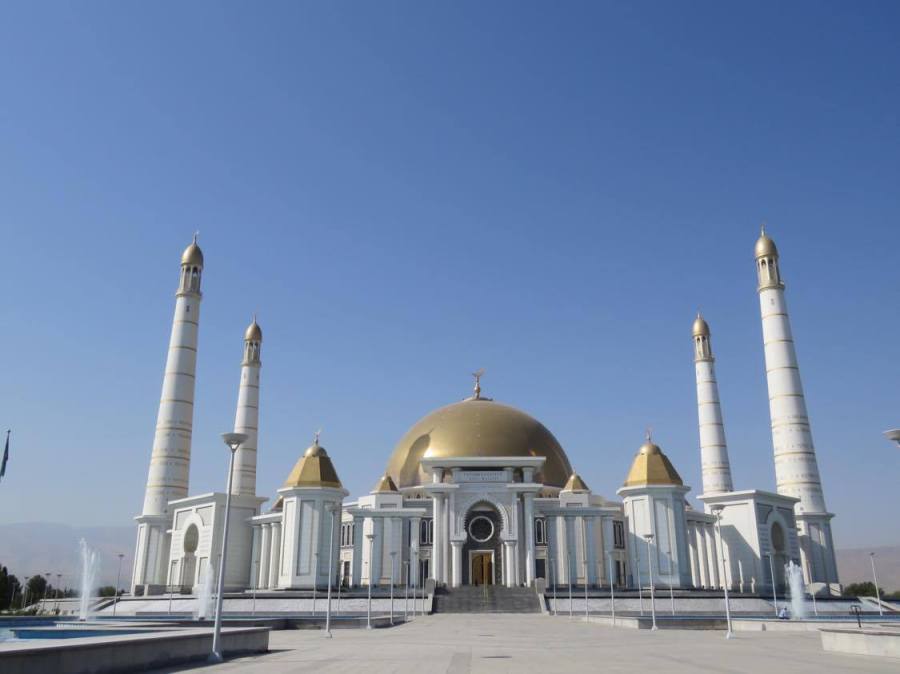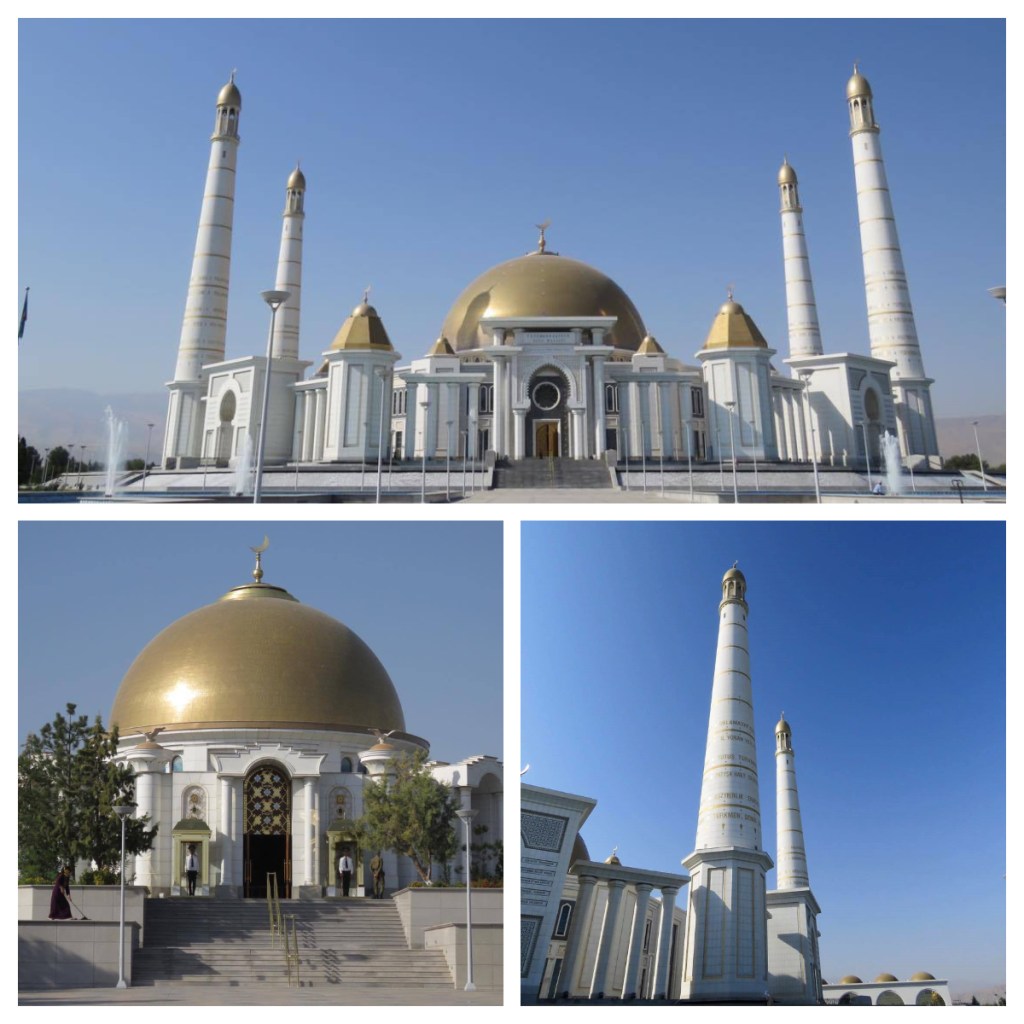And so to my last day in Central Asia and the forecast for the day was a toasty 39c!!! As with everything else, the weather has been such a contrast from the cold steppes to the sweltering city of Ashgabat! Thankfully it is not even the hottest time here – just imagine that! Apparently, it can be 50+ at the gas crater and with the heat of the fire even hotter!
Fun fact for the day, did you know what was once called the Caspian Sea, is now official called the “Caspian water body”. The “water body” is incredibly valuable due to all the oil and gas and sturgeon (the fish that produces the most expensive caviar) and seas and lakes have formal rules as to how the resources are divided, which the surrounding countries didn’t want to follow. After a large forum, the outcome was to call the former sea a ‘water body’ and define their own rules – 20 km from the coast line for oil and gas, another 10 km for fishing and then no mans ‘water’.
Our first stop of the day was the Turkmenbashi Ruhy Mosque (Spiritual or Golden Mosque) – one of the biggest mosques in Central Asia. The Mosque is just on the outskirts of the city in what was the village of Gypjak, the hometown of Niyazov’s (the first president) hometown and contains his family Mausoleum where he was buried after his death in 2006. Tragically his father died when he was 3 years old and his mother and two brothers were killed in the 1948 earthquake when he was 8 years old. From then he was brought up in an orphanage.
The mosque was built in 2004, funded by rich businessmen from the Arabian Peninsula who wanted to get a leg up in the oil & gas industry in the Caspian region and it has been the centre of some controversy. Not only are scriptures written in Turkmen/Latin alphabet rather than Arabic (which is very rare), but scriptures from the Koran are interspersed with quotes from Ruhnama – many Muslims were upset as this seemed to imply that the Ruhnama is placed as an equal to the Koran!
This mosque, not surprisingly, is a Friday mosque that can accommodate up to 12,000 people and is one of the largest mosques in Central Asia. It is the largest single domed (a dome that is completed covered in gold leaf) mosque in the world and has the largest eight pointed star, one piece carpet in the world! (Another one of those interesting world records!) This is particularly important to the Turkmen people as they are famous for their rug/carpet making – there is a Ministry of Carpets and the Turkmen carpet making techniques are included on the “Representative list of the Intangible Cultural Heritage of Humanity” as of 2019. Examples of rug patterns are even included on the country’s flag – one pattern for each region (5 in total).

But I digress, back to the mosque … numbers are always very important so here we see minarets that are 91m tall, representing the year of independence and 48 windows representing the year of the great earthquake! It also has incredible acoustics and underground parking for 500 cars and 100 buses!
Despite the opulence of this mosque, Turkmenistan is officially a secular state. The population are predominately Sunni Muslim or Christian but there are no religious schools to avoid extremism. People can go out of the country to religious schools; however, they must receive government approval to do this.
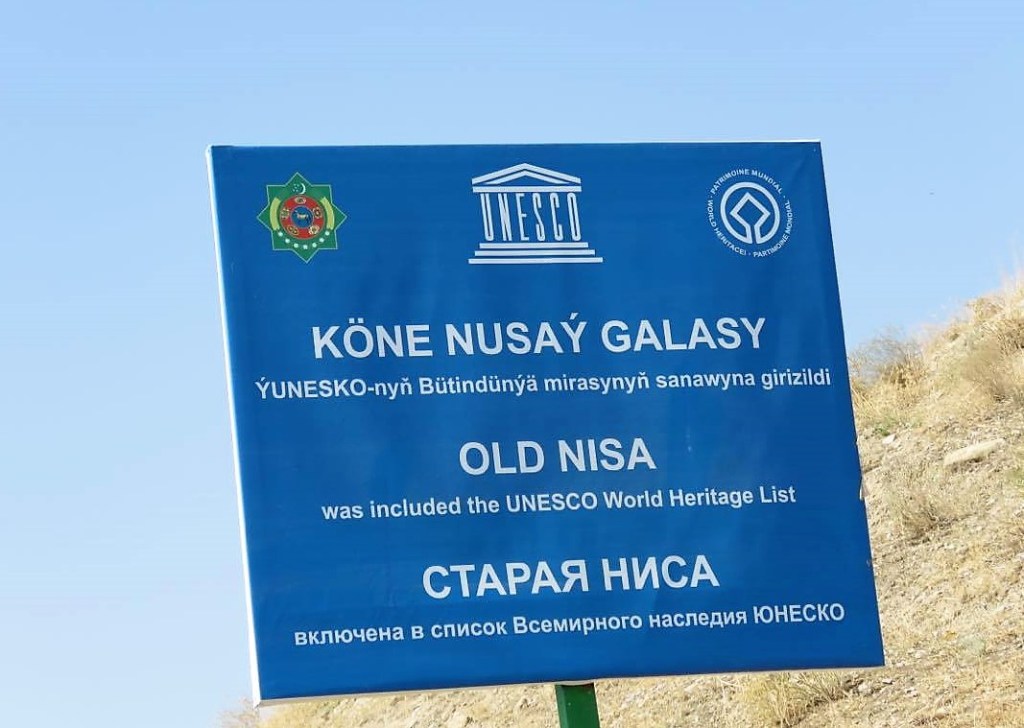
Our next stop was Old Nisa, an ancient Parthian settlement on the outskirts of Ashgabat and it has been considered the residence of the Parthian Kings and the capital of the Parthian empire which dominated the region from the 3rd century BC to the 3rd century AD. The fortress was declared a UNESCO World Heritage site in 2007.
Old Nisa was a major trading hub, situated at the crossroads of multiple trade routes of the Parthian empire, which was one of the most powerful and influential civilizations of the ancient world, rivalling Rome itself.
Excavations have revealed substantial buildings including temples and palaces, and walls 8m tall. They have also found many Hellenistic art works as well as a large number of ivory rhytons, some encrusted in gems (we had seen some of these yesterday in the museum). Apparently, this is the only place rhytons made of ivory have been found.
The Parthian’s were known for their very heavily armoured horses and strong mounted archers, have you heard of the Parthian shot (I think it is sometimes mistaken for a ‘parting shot’)? A well-known military tactic where the riders would feign a retreat and whilst still galloping away, would turn their bodies and fire their arrows at the pursuing enemy! Apparently, a Parthian smile is a smile that is not from the heart 🤔. I think the key take away here is don’t trust a Parthian!


Our guide at the site was a historian and archaeologist, often referred to as the ‘last King of Nisa’. He regaled us with stories of Old Nisa in its prime. The site covers over 14 hectares and only 35% has so far been excavated. With wide corridors for aristocrats and narrow ones for servants, dried brick from the 3rd century BC and baked brick from the 2 century BC.
When discovered in the 19th century, the Russian’s believed there was a royal necropolis here – as yet it has not be founded, however they have found an underground passage and are yet to explore it, so who knows what ancient treasures and secrets it holds.
From the ancient city we head back into the new city and the grand Memorial Complex – built as a memorial to the victims of great events in history e.g. Great Patriotic war (WWII to you and me) where approximately 90,000 Turkmen soldiers dies, the Russian invasion of Goek Tepe in 1880, the war in Afghanistan and the 1948 earthquake.

The complex is vast (650,000 Sq Metres) and has a different monument or memorial for each event. One of the most striking is for the victims of the earthquake – known as Monument Ruhy Tagzym. A 10 metres high bronze sculpture of a bull with a globe balanced on its horns. Ancient Turkmens believed that the earth is held on the back of a giant bull. The earth is heavy and every now and then the bull shifts it legs and moves it shoulders – hence earthquakes! (A similar story is also known in Islam where the cosmic bull carries on its back the angel that shoulders the earth!)
Our final stop for the morning (yes, it was still morning!) was at the Wedding Palace, an oddly shaped building on a hill overlooking the city. The building has 3 tiers (somewhat like a wedding cake), topped with a globe (with the image of Turkmenistan on it), surrounded by 8 pointed stars. Symbolism is again important – the building has 4 entrances, symbolising the four directions and the 8 pointed stars symbolising the 8 gates of Islam and the nomadic 8 directions of the world. Inside there are 6 rooms for marriage registration and 2 large wedding halls and 7 banquet rooms!

After lunch at a local restaurant we headed about an hour out of the city to Geokdepe to see the famous Turkmen horses called Akhal Teke. These beautiful horses have long thin legs and very short silky hair which makes them look almost metallic – they are built for endurance. They are one of the oldest horse breeds in the world and one of the major symbols of Turkmenistan. There is a National Horse day and is even a Ministry of Turkmen horses in the government (the only country in the world to have this).
The stud farm we were visiting was over 300 years old but had been closed down during the Soviet period as people were not allowed to run private businesses. Many of the horses were killed for food by the Soviets (totally against Turkmen beliefs who consider them holy and bury them like people when they die). Thankfully this family farm managed to keep a number of their horses hidden so they could keep the bloodline going.
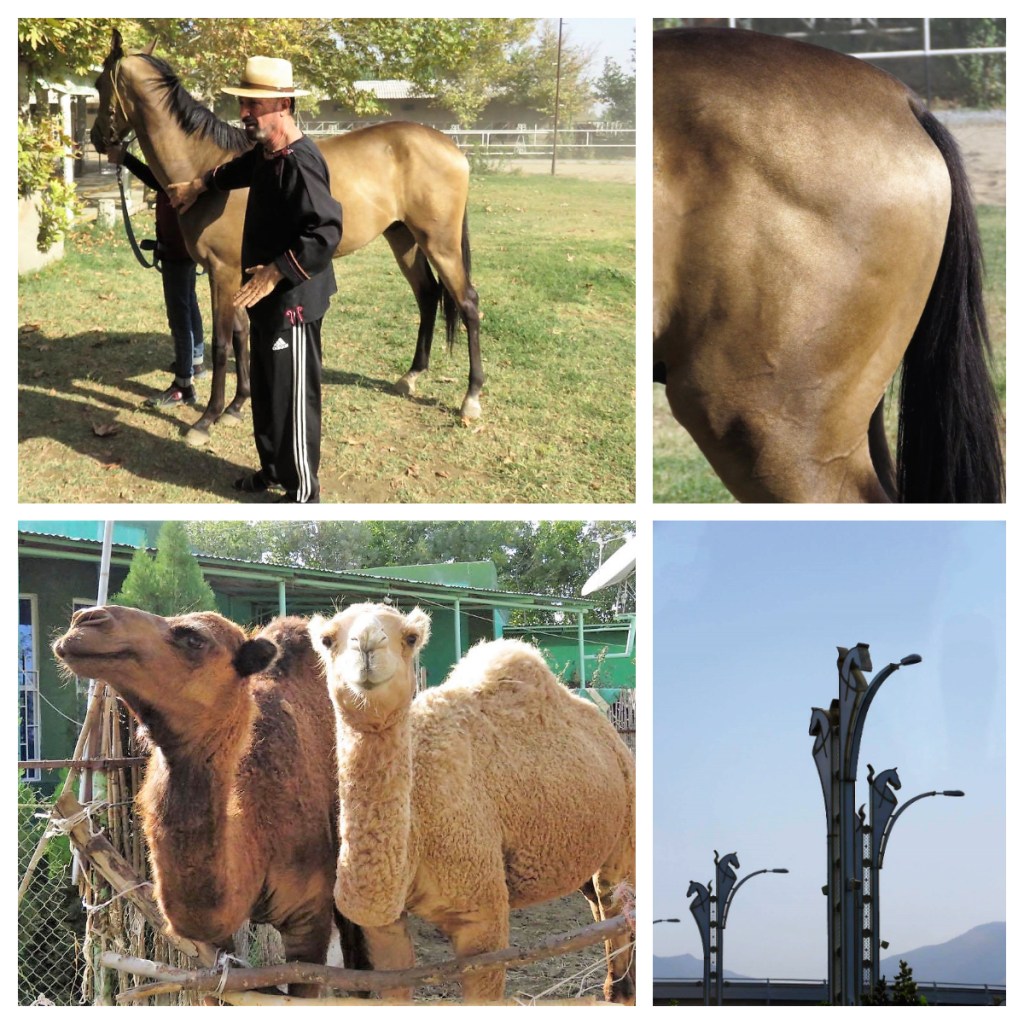
I enjoyed my time watching the beautiful horses and feeding their two very cute baby camels. 😘
Back at our hotel in the city we had a lovely last dinner reminiscing on the amazing trip we have had. It has been truly been a surprising and eye opening experience. It was so sad to say goodbye to Aijan who had been amazing guide throughout the 3 weeks, and I hope I will see her again.
My pickup was 12.15am for the depressing journey back to England but not before the final surprise Ashgabat had to offer – we had seen the airport on the way into the city, shaped like a hunting falcon. Incredibly at night, the lights make it look like the wings are moving up and down in flight – incredible! And when you get inside, the inside of the roof looks like the underside of the wing feathers. They have really thought of everything lol.
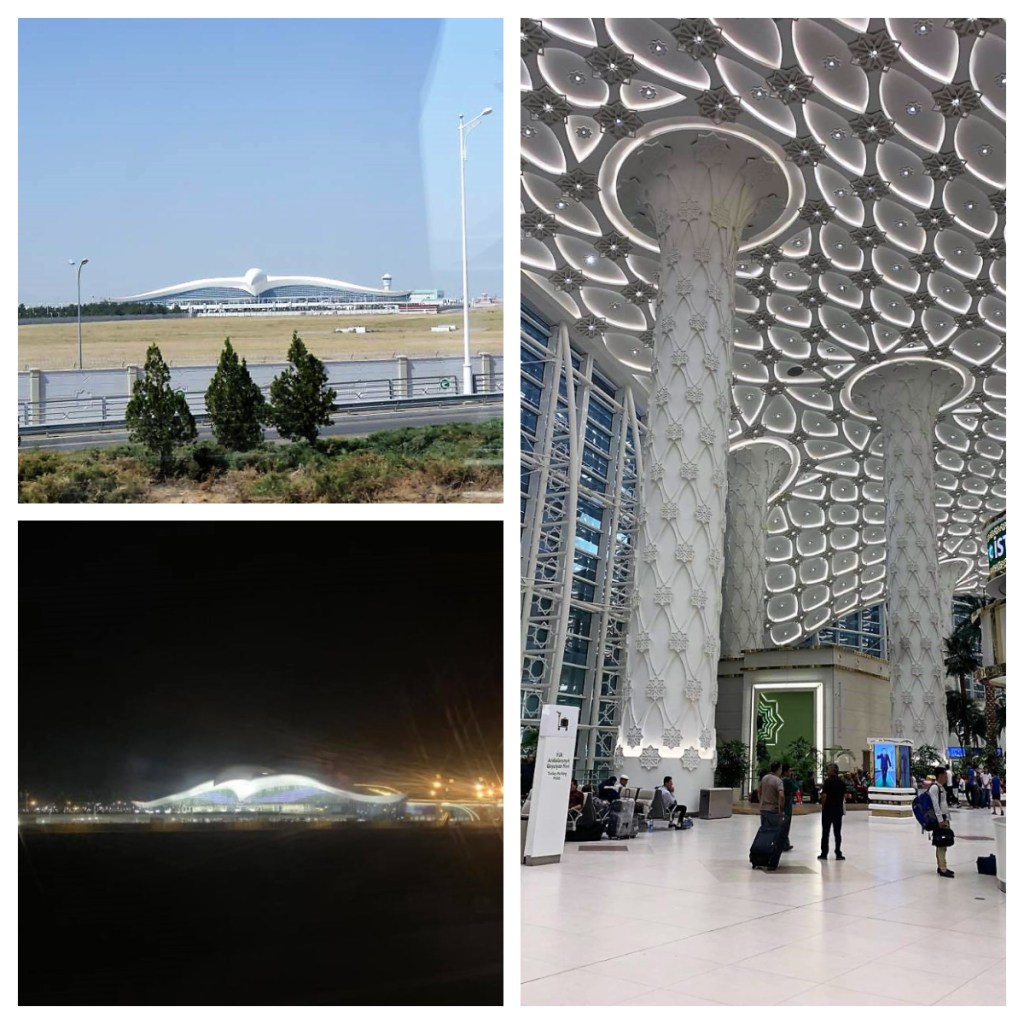
And so, just over a year from the start of this incredible journey, I have finally managed to write about it all (I am thankful for my obsessive note taking 😂). There are too many adjectives I could use to describe the trip and experiences – eye opening, interesting, educational, beautiful, spectacular, amazing, incredibly. Truly a trip of a lifetime … but places I hope I can make it back to in the future.
If you are reading this and thinking about taking a trip to Central Asia (one day in the future when we can travel freely again), I would highly recommend getting in touch with Kalpak Travel (kalpak-travel.com) – you can join one of their scheduled small group tours, or Luca and Aijan can help arrange your personalised itinerary. Not a sponsored ad, just a recommendation based on my amazing personal experience.

